Introduction
Navigating social communication challenges is a fundamental aspect of supporting children with autism. These challenges often manifest as difficulties in interpreting verbal and nonverbal cues, such as facial expressions and tone of voice, which are crucial for effective interaction. Research highlights that individuals with autism may struggle with adapting to changes in speech patterns, making it harder for them to understand prosody—the rhythm, pitch, and intonation used in speech.
Additionally, initiating and maintaining conversations can be particularly challenging, leading to misunderstandings and social isolation.
Early intervention tailored to the unique needs of children with autism can significantly improve outcomes. Initiatives like the Adult Autism Health Resources project aim to equip practitioners with the tools necessary to provide developmentally appropriate and family-empowering support. Furthermore, structured interactions and communication aids, such as robot-assisted therapy and tablet-based games, have shown promise in addressing these social difficulties.
By focusing on these targeted strategies, it becomes possible to unlock new educational and social opportunities for autistic individuals, enhancing their ability to engage effectively with others.
Understanding Social Communication Challenges
Social interaction difficulties are key aspects of the condition that notably affect the ability to engage with others. These challenges often involve difficulties in interpreting verbal and nonverbal cues, such as facial expressions and tone of voice, which are essential for effective communication. For example, research from the University of Rochester highlights that individuals with autism can struggle to process and adapt to changes in speech patterns, making it harder for them to understand prosody—the rhythm, pitch, and intonation used in speech.
Moreover, autistic individuals frequently face obstacles in initiating and maintaining conversations, which can lead to misunderstandings and feelings of isolation. This is particularly important as joint attention, the shared focus of two individuals on an object, plays a vital role in children's interpersonal and cognitive development. Organized exchanges and choosing suitable support tools, like robot-assisted therapy, have demonstrated potential in tackling these interpersonal challenges. For instance, a tablet-based game has been used to successfully measure literacy skills in nonspeaking autistic participants, suggesting the potential for written communication to unlock new educational and interpersonal opportunities.
Moreover, prompt support customized to the specific requirements of young children with developmental differences can greatly enhance results. Initiatives like the Adult Autism Health Resources project aim to equip practitioners with the necessary tools to provide developmentally appropriate and family-empowering support. This guarantees that toddlers showing early indicators of developmental disorders have improved access to interventions that tackle fundamental interaction challenges, ultimately boosting their capacity to connect with others.
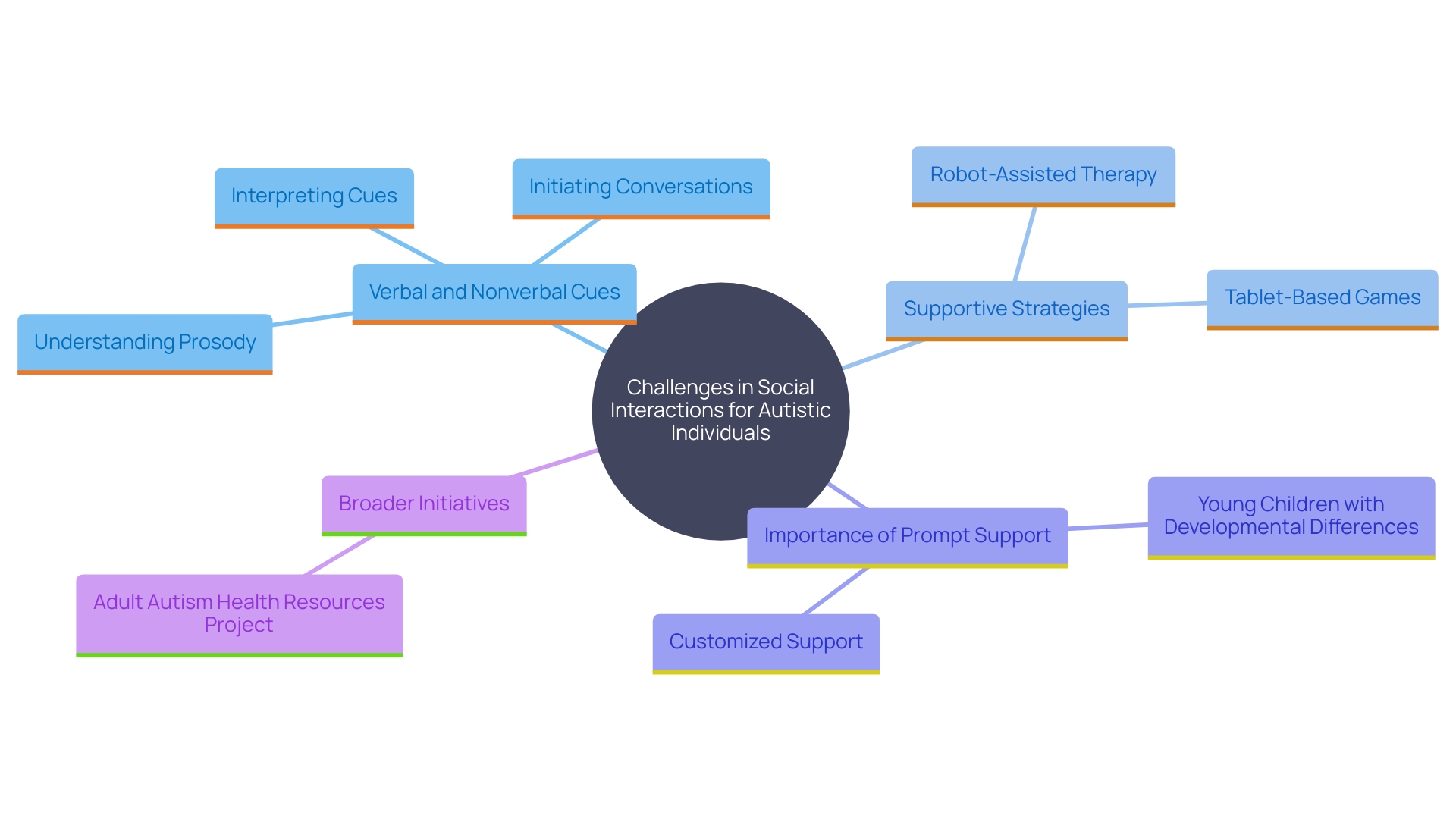
The Impact of Autism on Social Interaction
Autism can significantly affect interpersonal interactions, often presenting unique challenges in forming relationships. People with developmental conditions may interpret interpersonal information in distinct ways, which can establish obstacles to engaging with companions. This unique processing style often leads to a preference for solitary activities, making participation in group settings more difficult. Studies emphasize the significance of prompt action, especially those facilitated by caregivers, to tackle these fundamental interaction difficulties. Dr. Hannah Schertz's research highlights that timely, suitable strategies can significantly enhance communication skills in toddlers displaying initial indicators of developmental disorders. Moreover, studies reveal that individuals on the spectrum are less influenced by social pressures like the 'bystander effect,' showcasing their potential strengths in social contexts. Despite these strengths, the unemployment rate for autistic individuals remains alarmingly high, reaching up to 90%, underscoring the need for tailored support and intervention.
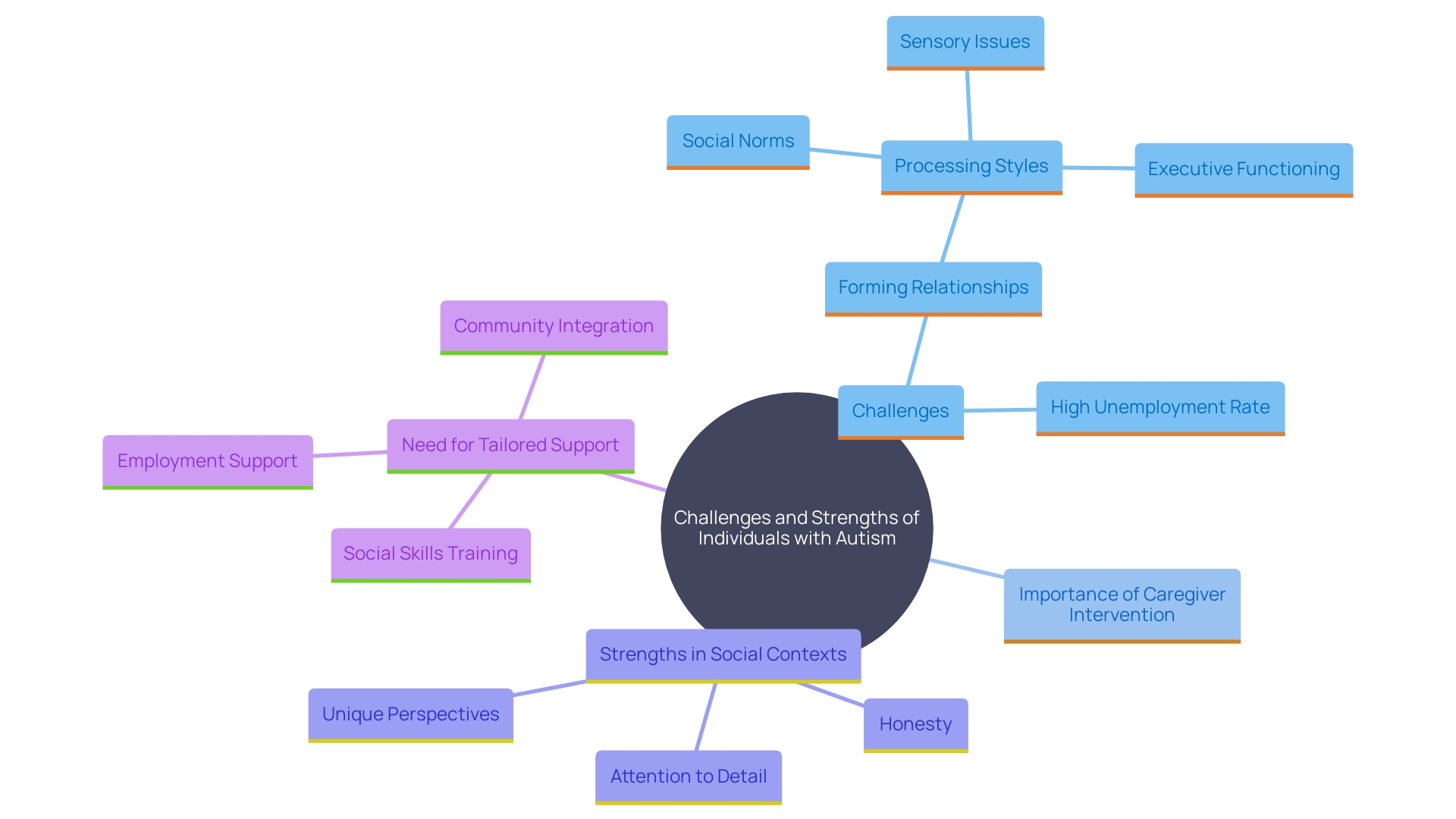
Types of Social Interaction Difficulties in ASD
Social interaction difficulties in individuals with autism can manifest in a myriad of ways. These challenges often include initiating conversations, interpreting interpersonal cues, and maintaining the natural flow of dialogue. For instance, some individuals might struggle with turn-taking during conversations, while others may inadvertently dominate discussions, leading to social isolation.
Research highlights the significance of early and developmentally suitable actions. According to Dr. Patricia Muller, randomized controlled trials and cost-effectiveness studies are vital in developing effective early strategies. These studies seek to offer customized assistance for very young children with interpersonal difficulties, concentrating on the fundamental challenges related to developmental disorders.
Furthermore, actions facilitated by parents have demonstrated encouraging outcomes. Dr. Hannah Schertz emphasizes that assisting parents in the application of mediated learning techniques greatly enhances interaction skills in toddlers susceptible to developmental disorders. This early intervention is crucial as preverbal interpersonal communication is closely linked to later language competency.
Interestingly, despite the communal challenges, individuals with developmental differences display unique strengths. A study by York University reveals that individuals on the spectrum are less influenced by the 'bystander effect,' indicating a higher likelihood of acting in the face of wrongdoing compared to their neurotypical counterparts. This discovery contests the deficit mindset and highlights the potential advantages of neurodiversity in community and workplace environments.
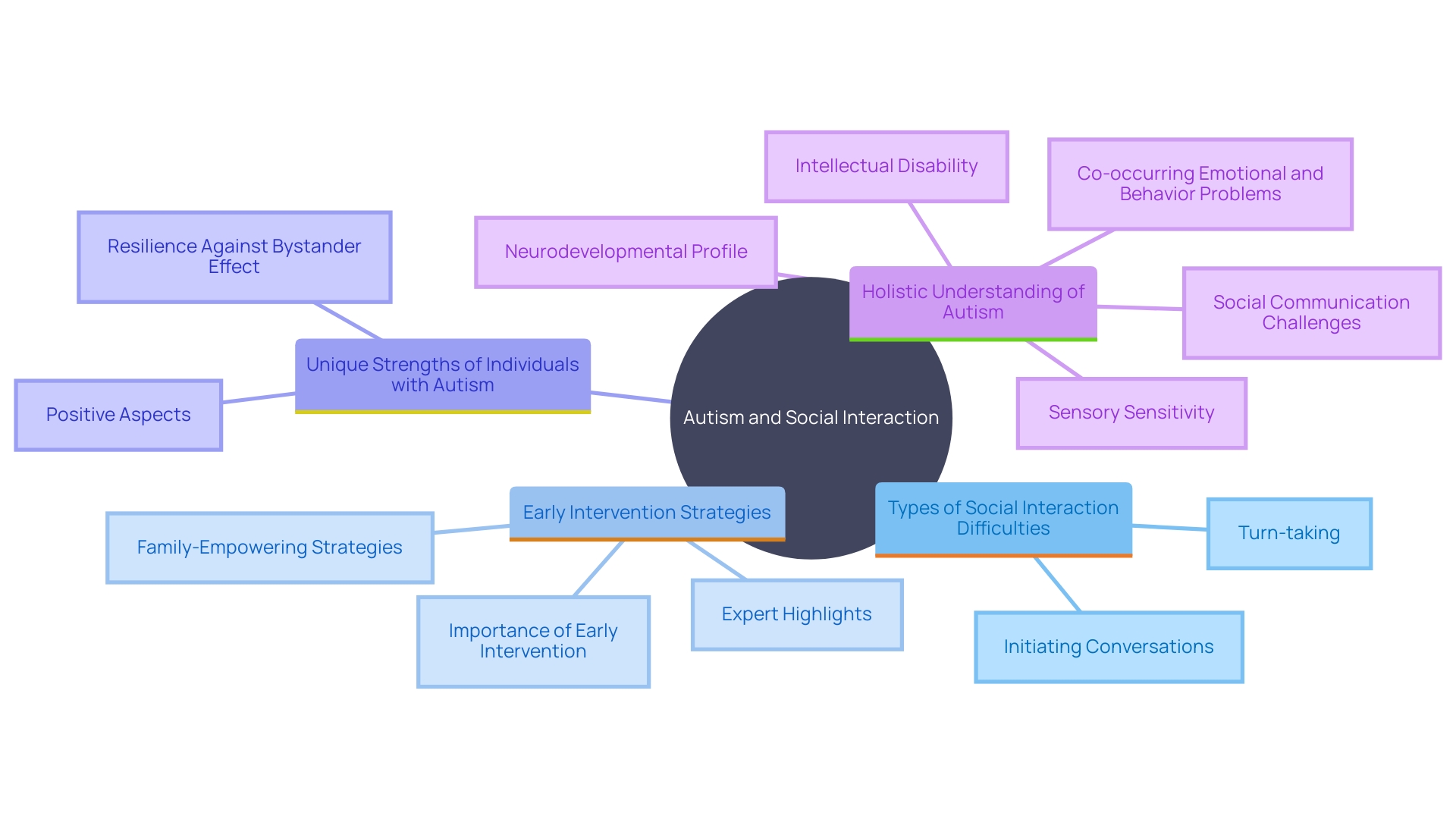
Strategies for Building Social Skills
Developing interpersonal skills in individuals with autism involves utilizing specific strategies that foster understanding and practice. Methods like role-playing, interpersonal narratives, and video modeling are especially effective. These methods provide concrete examples of interpersonal interactions, helping individuals learn appropriate responses and build confidence in interpersonal situations.
As stated by Dr. Hannah Schertz from Indiana University, early support facilitated by parents can greatly improve interpersonal skills in young children with developmental challenges. Her research highlights that tackling interpersonal interaction at an early stage is vital as it constitutes the central challenge of autism. Developmental interventions have demonstrated an enhancement in interpersonal exchanges with caregivers, underscoring the significance of early participation.
Creative techniques like employing tablet-based games to evaluate literacy skills in nonspeaking autistic individuals emphasize the potential for written expression as a different way of interaction. This method could open up educational, job, and community opportunities, offering a wider range of interaction techniques to those who may not utilize speech.
Moreover, evidence indicates that early childhood support strategies, especially those that are naturalistic and behavioral, are advantageous in enhancing communication abilities. Programs such as Applied Behavior Analysis (ABA) and Joint Attention, Symbolic Play, Engagement, and Regulation (JASPER) are customized to address the distinct requirements of young children, ensuring that approaches are developmentally suitable and empowering for families. These methods seek to directly tackle the community challenges linked to developmental disorders, rendering them an essential component of early support strategies.
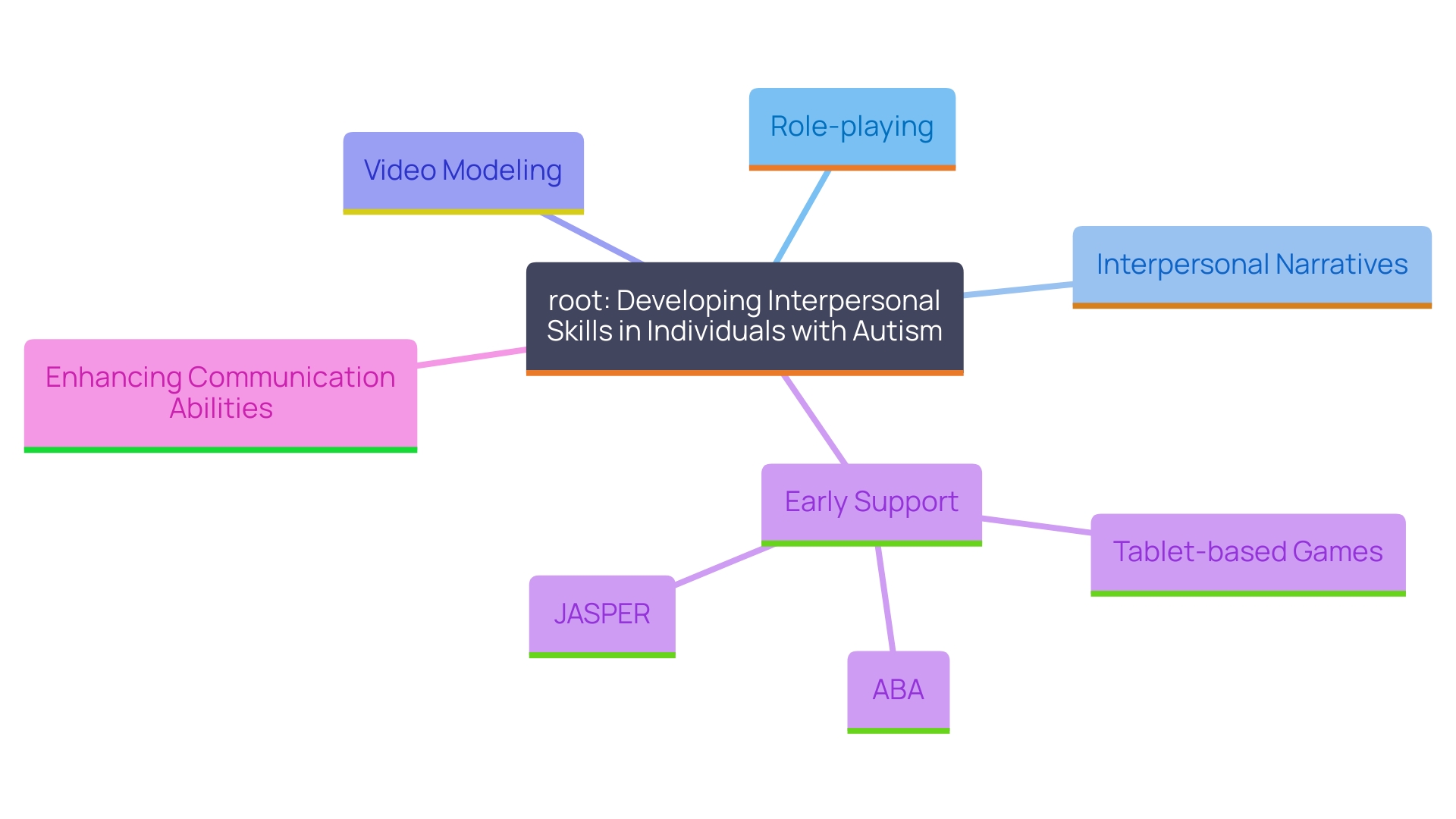
Creating Inclusive Environments
Establishing inclusive settings is essential for individuals on the spectrum to succeed socially. This involves promoting awareness and understanding among peers, and implementing supportive structures in schools and communities. Evidence indicates that developmental interventions can significantly enhance communication within a community, particularly through naturalistic developmental behavioral interventions. Schools play a crucial role in these efforts. Numerous institutions currently provide focused programs designed to meet the requirements of students on the spectrum, like The College of New Jersey's Career and Community Studies initiative, which assists learners with developmental differences and other disabilities.
Safe environments where individuals can practice interpersonal skills without fear of judgment are essential for their development. The Autism Welcoming Initiative, launched by Autism Alliance of MetroWest, is a prime example of efforts to train and certify businesses to be more inclusive. Pamela McKillop, co-director of Autism Alliance of MetroWest, notes that parents often hesitate to bring their children into the community due to fears of judgment. Initiatives like these help create environments where autistic individuals feel accepted and supported.
The positive impact of inclusion extends beyond autistic individuals. Research highlights that inclusive classrooms benefit all children by enhancing social-emotional skills, building friendships, and fostering a sense of belonging. As President Joseph R. Biden Jr. stated, supporting and empowering neurodiverse individuals is crucial for ending disparities in employment, healthcare, and education. Engaging and supporting children with disabilities in all areas of life is a fundamental determinant of mental health and equity.
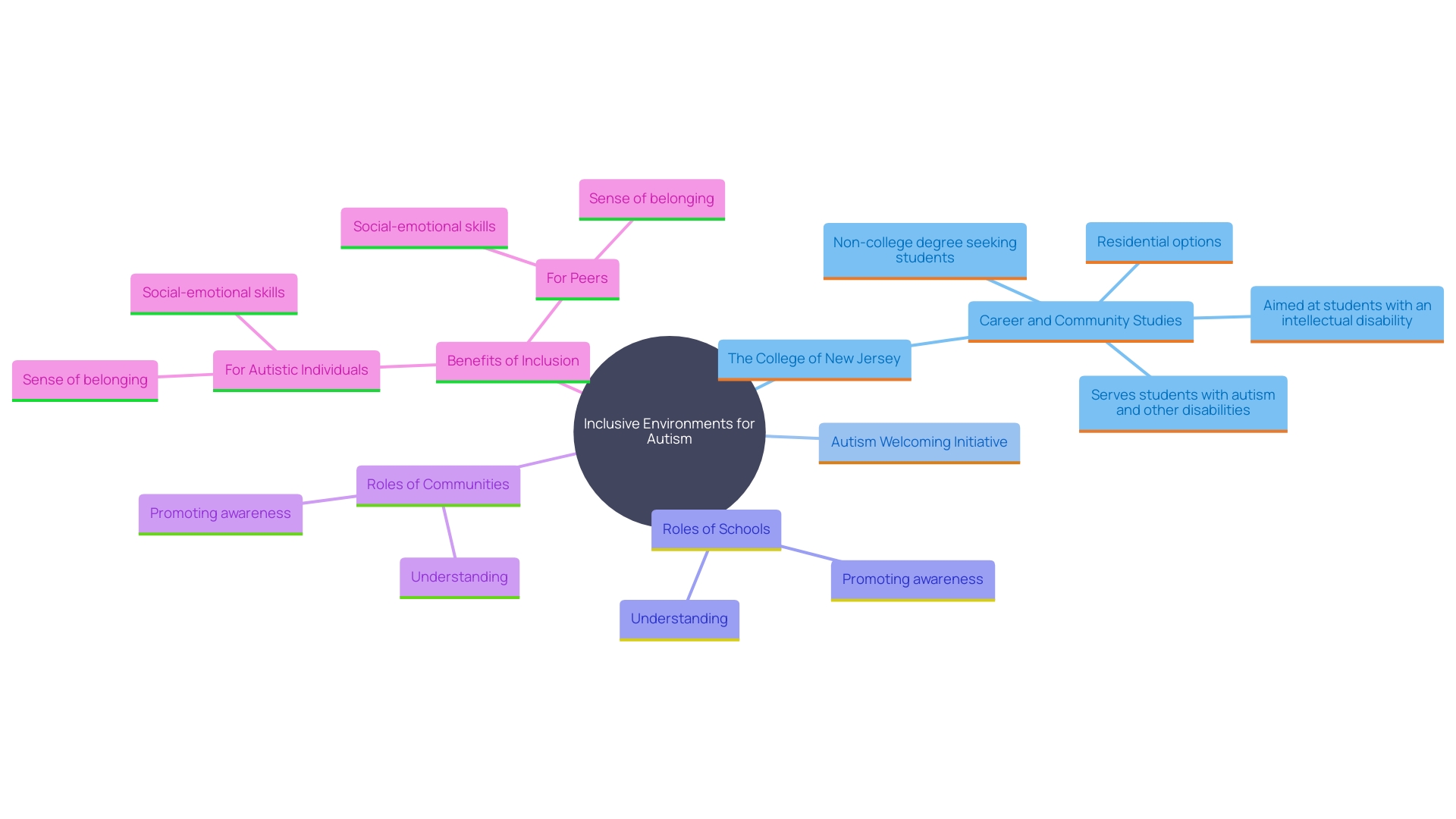
Early Intervention and Ongoing Support
Prompt assistance is essential for tackling interpersonal skill difficulties in individuals with developmental disorders. Data indicates that developmental programs greatly enhance interpersonal exchanges, especially in engagements with caregivers. 'Naturalistic developmental behavioral approaches are effective at tackling core challenges associated with autism, especially social communication difficulties.'. These strategies are customized to the requirements of very young children, often involving parents directly to promote better outcomes.
Responsive and engaging parent–child interactions are linked to positive outcomes for autistic children. For instance, a study in New Zealand found that children receiving low-intensity, parent- and clinician-delivered support showed greater engagement and language use compared to a control group. Parents in the intervention group were also more adept at using strategies to support their children.
The Autism Community in Action (TACA) highlights the significance of different therapy choices for boosting interaction abilities, enhancing relationships, and addressing sensory challenges. Timely and consistent assistance guarantees that individuals with developmental differences keep improving their interpersonal abilities throughout their lives. As Dr. Hannah Schertz from Indiana University points out, guiding parents in mediated learning practices is vital for improving social communication in toddlers with or at risk for autism, addressing the core challenge early on.
Conclusion
Navigating the complexities of social communication challenges in autism reveals the critical importance of early intervention and tailored support. Understanding the unique difficulties faced by individuals with autism, such as interpreting social cues and maintaining conversations, is essential. Research consistently shows that addressing these challenges early can significantly improve social outcomes and enhance the ability to engage with peers.
Implementing effective strategies, such as role-playing and the use of communication aids, empowers individuals to develop their social skills in a supportive environment. The integration of innovative methods, including tablet-based games and naturalistic interventions, provides additional avenues for communication, fostering both educational and social opportunities. By actively involving parents and caregivers in the intervention process, a strong foundation for social communication can be established.
Creating inclusive environments in schools and communities is equally important. By promoting awareness and understanding, these spaces can help reduce stigma and encourage meaningful interactions. Initiatives aimed at training businesses and educational institutions to support autistic individuals contribute to a more accepting society, ultimately benefiting everyone involved.
In conclusion, the journey towards improved social communication for individuals with autism is a collaborative effort that requires commitment, understanding, and innovative strategies. By prioritizing early intervention and fostering inclusive environments, it is possible to unlock the potential of autistic individuals, paving the way for fulfilling social interactions and a brighter future.




